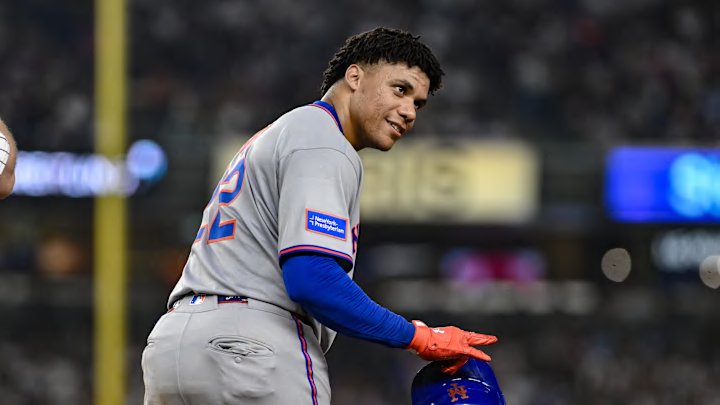If there’s one thing playing in the New York market teaches you, it’s to expect the worst — especially when expectations are sky high. Just ask Joey Gallo, whose brief, forgettable tenure in pinstripes was filled with boos and brutal headlines. Or Aaron Rodgers, who faced relentless scrutiny the moment he tried to take the reins of the Jets.
Now, the spotlight has shifted to Juan Soto.
After signing a record-shattering 15-year, $765 million deal — the richest in MLB history — Soto’s transition from the Yankees to the Mets has been rocky, to say the least. Fewer than 50 games into the 2025 season, he’s already hearing it from fans, pundits, and perhaps even his own clubhouse.
During the most recent Subway Series, Soto avoided speaking to the media entirely — dodging questions about his return to Yankee Stadium, his early-season struggles, or even his spot in the Mets' lineup behind Aaron Judge. Then, in Monday night’s matchup at Fenway Park, Soto hit a ball off the Green Monster and stood admiring it as if it were a home run. Instead of hustling for extra bases, he ended up stranded on first.
“We’ll talk to him about it,” said Mets manager Carlos Mendoza. “He thought he had it … but you’ve got to get out of the box. Yeah, we’ll discuss that.”
Lack of hustle isn’t new in baseball — but it hits differently when it’s coming from the highest-paid player in league history.
Just the night before, Soto hit a grounder to Yankees second baseman DJ LeMahieu. With a runner’s chance to beat it out, Soto coasted to first, jogging with minimal urgency in a 2-2 game in the eighth inning. LeMahieu made a tough play from his knees and still beat Soto to the bag — with room to spare.
When asked about the lack of effort, the 26-year-old deflected blame. But the numbers don’t lie: over his last 10 games, he’s batting just .216 with three home runs and six RBIs. On the season, he’s slashing a modest .246/.376/.439 — far from the elite production Mets fans expected for nearly three-quarters of a billion dollars.
Perhaps what stings more than his underwhelming start is how unfamiliar this all is for Soto. In the Bronx, he enjoyed a stretch mostly free of criticism. Now in Queens, that cushion is gone. Mets fans aren’t just demanding greatness — they’re comparing him to the guy batting in front of him. Aaron Judge is doing what Aaron Judge does: crushing baseballs and keeping quiet.
Soto, meanwhile, is facing a reality he’s never had to deal with: a down year, in the most unforgiving sports city in America, while wearing a bullseye on his back.
The Mets are still projected to make the postseason, and there’s time for Soto to right the ship. But this is New York. Talent isn’t enough. Accountability matters. So does effort. And most of all, optics.
Soto doesn’t have to be perfect — but he has to show up.
Because if he can’t handle the pressure now, how will he survive the next 14 years?
